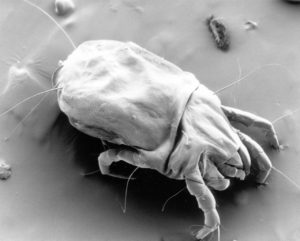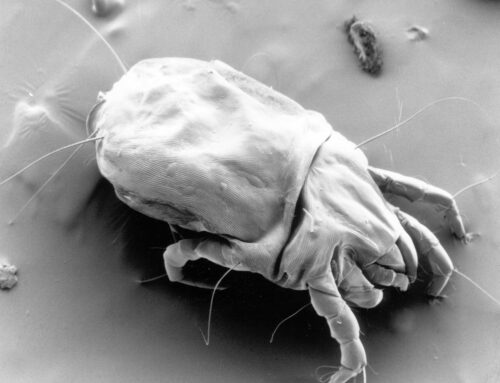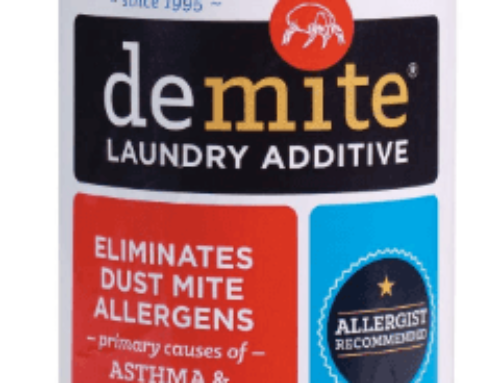Table of Contents
I’m no biologist if that’s what you called a person who knows everything about dust mites. But I have done enough research to know what these almost invisible pests are and how they are causing all the allergic symptoms developed by my child.
If you’re tolerant to dust mites allergy, you probably won’t felt their presence in your home. But if you’re highly sensitive to dust mites, just as my child and many others in the population, you’ll be affected by these microscopic bugs even if they are not visible to you.
What Are Dust Mites
I haven’t seen one with my eyes. Blame me for my poor eyesight or these pest being just tiny enough to escape human vision. But I’ve learned enough from the experts to know what dust mites are all about.
There are a few species of them that stems from different families and they exist across the planet. In temperate regions, you get the Dermatophagoides pteronyssinus, Dermatophagoides farinae, and Euroglyphus maynei from the Pyroglyphidae family of mite.
Tropics area surrounding the equator is known to be infested with Blomia tropicalis of the Glycyphagidae family and D. pteronyssinus.
You probably have these microscopic pests crawling all over your home without even realizing it. The average dust mite measures only about 1/100th of an inch or 0.3 millimeters. It’s hard to identify one with your bare eyes unless you’re crawling around with a magnifier.
How Does A Dust Mite Looks Like

If you’re curious about how a dust mite looks like, here’s an image that was taken by a scanning electron microscope. It has eight legs, just like a spider, but without any eyes or antenna. The body is covered by a translucent shell.
Like most living beings, dust mites are gender-based. The one that is captured in the image is a female dust mite. Adult male dust mites are known to have a lifespan of up to 19 days while its female counterpart can live up to 70 days.
If nothing is done to get rid of the dust mites, and the environment in your home is conducive for them, it will continue to breed and expand its colony. A female dust mite usually lay up to 100 eggs during the final 5 weeks of its life cycle.
This uncontrolled increase of population in my home may explain the worsening of the allergy symptoms of my child.
What’s The Perfect Breeding Environment For Dust Mite
Dust mites thrive in warm and humid environments. According to the Asthma and Allergy Foundation of America, the ideal temperature for dust mites are between 68 to 77 degrees Fahrenheit or 20 to 25 degrees Celsius. The dust mites thrive at 70%-80% humidity.
If you have a badly ventilated bathroom that links to your room, it will be the perfect breeding place for dust mites. Of course, dust mites are micro bugs that need to feed on something too. And the human is the perfect source of food for dust mites.
No, dust mites don’t bite on humans, unlike the horror stories of some urban myth. Instead, they feed on skin flakes that human or pets shed each day in their home. In a year, you’ll probably lose about 8 lbs of skin flakes and nourish the dust mites right in your home.
Gross, but true.
The next time you walk through your room, you may have a different perception of your mattress where you spend an average of 8 hours sleeping on. During the period, you would have shed enough dead skin cells to feed thousands of dust mite for a month.
But mattresses are not the only breeding spot for dust mites. You may find dust mites happily colonizing your carpet, boxes, pillows, blankets, upholstered furniture, curtain and rugs. Remember that warm and humid made perfect homes for dust mites.
How Dust Mites Can Cause Allergic Reaction
The dust mites itself are pretty harmless. But their excretion or fecal pellets, and the exoskeleton that the dust mites shed contain a protein that can trigger allergies in humans. While not everyone has the same level of sensitivity to dust mites, the numbers of those who do are worrying enough.
When you start displaying symptoms like itchy eyes, dry throat, coughing, and a runny nose when staying indoors, chances are you’re developing allergies to the dust mites. These symptoms generally persist as long as the dust mites are breeding freely in your home.
You shouldn’t’ take dust mites allergy lightly, especially in children. It has the potential to develop into asthma, or make existing asthmatic condition worse. If you are showing any symptoms of dust mites allergy, do consult your doctor for the right treatment.
Getting Rid Of Dust Mites
There are various methods that may help in reducing the population of dust mites in your home. One of the main priority is to wash your bedding and linen cover regularly to get rid of the dust mites and its feces. You can also use dust mite covers to protect from the exposure of dust mites.
Another method of preventing dust mites from breeding in your home is to ensure a low humidity in your home. In this case, a dehumidifier may do the trick. Besides, keeping dust mites away, a lower humidity also prevents the growth of other allergens, such as mold.
Sweeping, vacuuming or dusting off beddings and furniture can sometimes worsen your allergy and the dust mites are sent flying into the air. Instead, I chose to install a HEPA filter air purifier to remove the allergens from the air.
Are there any signs of dust mites in your home?





Leave A Comment